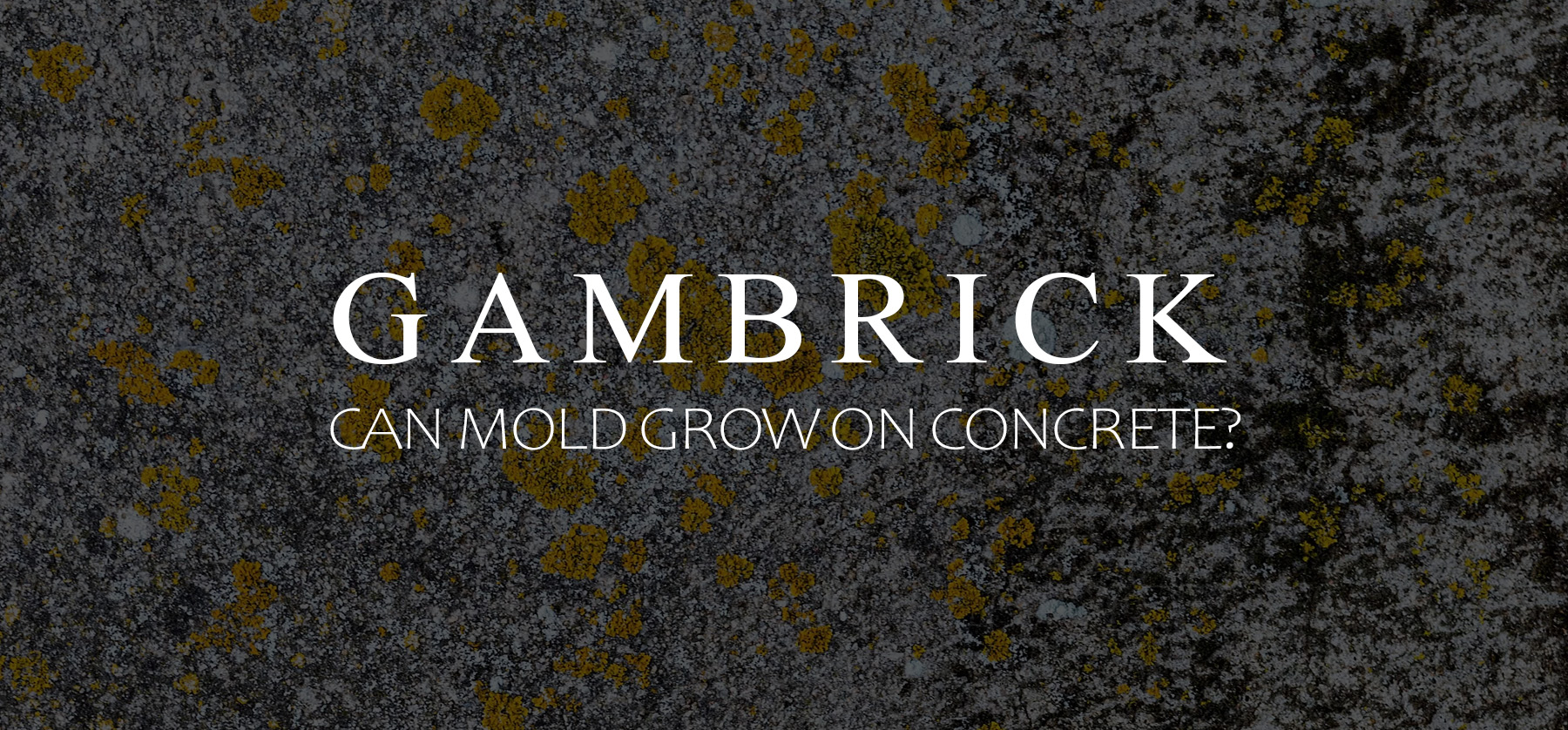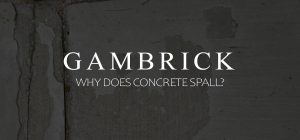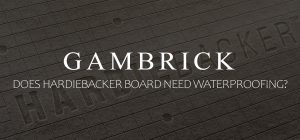
Can Mold Grow On Concrete?
Mold can grow inside and on the surface of concrete. Moisture, humidity, dampness, darkness and warm temperatures can create the ideal home for mold to grow. This a common occurrence in dark warm basements that lack airflow and sunlight. Concrete is a porous building material with lots of places for mold spores to take route and flourish. Mold is a living thing that grows fast. Once it starts growing on concrete it can quickly spread to other areas of the home like walls, floors and air ducts. It’s a serious issue because mold can cause both health and structural problems. So clean it off as soon as you find it.
I’ve been a mason for over 25 years and can tell your firsthand how bad mold growth on concrete can be. One thing you can do to prevent it is by making sure you don’t use overly wet concrete. Too much water in your concrete mix creates extremely porous finished concrete because that excess water has to evaporate out, which effects how long it takes concrete to dry. These pores make it easier for mold to grow.
Mold can grow on concrete in any geographical area of the world. Many people believe it only happens in warm climates but that’s not necessarily true. If conditions are right mold can grow just about anywhere.
Mold prevention and management should begin with the design of a home. Plan on mitigating excess moisture on concrete walls and floors, creating airflow and dealing with humidity. A simple basement fan to circulate air and dry out moisture is usually enough to stop mold growth.
Mold can grow anywhere spores land. Which includes concrete. In fact, mold grows very easily on concrete because of its deep pores. They’re the perfect place for spores to flourish.
Does Mold Grow On Concrete?
Yes, mold does grow on concrete. In fact, because of concrete’s pores and where it’s usually used, places like basements and crawl spaces, concrete makes mold growth easy.
Mold is an essential part of nature. It breaks down organic materials to make room for new growth. There are thousands of mold species that disperse through the air and settle on objects. Most die when they land, but if conditions are right they can start to grow.
While many types of mold are relatively harmless, some are dangerous and can cause serious health problem and maybe even death. Some species trigger allergy symptoms, upper respiratory problems, and other serious illnesses. Once mold spores reach an air duct they can quickly spread throughout the home.
Mold requires the right conditions to reproduce and grow, these include:
- Oxygen: Mold needs oxygen to grow. It does not grow underwater or in airtight containers.
- Temperature: Mold generally likes warmer temperatures between 40°F to 120°F. When temperatures fall above or below this range, it can become dormant. But not always. I’ve seen mold grow in frigid temperatures.
- Food: Mold feeds on organic material.
- Moisture: Mold loves a warm, dark, damp environment like a basement or crawl space.
If mold spores land on a concrete wall and some of these conditions are present, it can take root and start to multiply. And mold grows fast. In a matter of months, mold can take root and cover an entire basement wall with new spores.
Mold Grows Inside Of Concrete Too
Concrete is a dense material that appears relatively flat, but it’s actually quite porous. Mold spores not only live on the concrete’s surface, but also deep inside its pores.
Some types of mold produce acid that can degrade concrete. Over time, this can compromise its strength and durability. As mold degrades concrete, it becomes even more porous. This creates even more areas for mold to spread.
Mold feeds on moisture, bacteria, salts, dust, pollen, dirt and other organic materials it finds. Almost all of these things are found on the concrete’s surface. This is why almost all mold growth starts on the surface and not the inside. If you manage surface conditions properly, internal mold growth can usually be prevented.
In some cases mold can grow inside concrete without starting on the surface. This usually happens inside of deep cracks and not pores. If you have deep cracks that are moist and full or organic material, mold can start growing inside the concrete where you can’t see it. In this case, seeing mold on the surface isn’t a sign that mold is starting to grow, it could have been growing beneath the surface for months.
Ventilation allows wet materials to dry out quickly so mold can’t grow. An ideal condition for mold growth is a warm, dark, damp basement. If you dry out the dampness with airflow, mold usually won’t grow on or inside of concrete. That’s why we always recommend basement or crawlspace ventilation.
To prevent mold growth, fix deep cracks and keep the surface dry. Also seal concrete from the outside with a vapor barrier. This will help prevent mold growth in and on your concrete.
Sealing The Building Prevents Mold Growth
One of the best ways to prevent mold growth happens when you first design and build the home.
To minimize mold growth, you must properly seal the building envelope. No matter where you live, moisture will exist outside of the home. It rains, snows, or becomes humid. Water exists in the ground and air. This moisture needs to stay outside of the home by sealing the envelope above and below ground. Ground water intrusion is a major cause of mold. If your foundation isn’t sealed properly, ground water can come right through concrete walls or floors.
The use of HVAC systems, fans, or heaters are used to control temperatures and relative humidity levels inside the home. But you still need to seal the home against moisture. These systems work great for areas they’re installed in. But do basically nothing where they’re not. Places like a crawl space, basement, inside walls, around pipes, behind sinks, under tubs or in duct work.
Dehumidifiers and fans are very effective ways to create and maintain temperature and relative humidity levels in a basement or crawl space. This helps prevent mold growth which can spread throughout the home.
The most common place mold starts in a house is on concrete basement or crawl space walls and floors. Almost all of which can be prevented by sealing the foundation and drying the air.
Mold growth on concrete is preventable. Help prevent moisture buildup and dry wet materials before mold has the chance to settle in and grow.
Humidity Causes Mold To Grow On Concrete
The most common cases of mold in a crawl space or basement is humidity or ground water intrusion. Ground water can be kept out by sealing the foundation properly, but that doesn’t do anything for high humidity.
Controlling the relative humidity in a basement is very important. Especially if it does not have good ventilation. Mold can grow due to moisture in the air that lands on the surface. If you’ve ever gone into your basement or crawl space and seen water droplets collecting on the walls, that’s a bad sign.
If relative humidity remains at 60% or below you’ll have a better chance at preventing mold growth. Keep the concrete dry with dehumidifiers and fans to create airflow.
Can Black Mold Grow On Concrete?
Yes, black mold can grow on concrete. It prefers to grow on organic materials, particularly those containing cellulose wood, wallpaper, drywall, carpet, adhesives, fabric, and cotton insulation. But it can grow on concrete if organic materials are available.
Black mold is also known as Strachybothrys Chartarum. It’s a type of mold that can grow on concrete. Stachybotrys has a mucous like texture that appears black or dark green. It thrives on damp, humid areas.
Exposure to black mold can cause allergic reactions and flu-like symptoms because it’s toxigenic.
Black mold isn’t that different from other types of mold. If it finds a warm, damp concrete with a food supply, it’ll grow on the concrete and possibly spread throughout the home.
Black mold loves damp or wet areas, like underneath a sink or in a damp basement. It can flourish on concrete that is left wet if a food supply is there too. Make sure to keep concrete surfaces dry from the inside and out. This means using a dehumidifier, fans and sealing the foundation. Also fix leaks if you find them.
How Does Mold Grow on Concrete
Concrete is not an organic material like wood, so it can’t act as a food source for mold. There are no elements inside concrete that can feed mold. However, concrete is very porous and absorbs water. Walls and surfaces that are made with concrete can accumulate organic materials like moisture, bacteria, salts, dust, pollen, dirt, dead bugs and other particles that mold can feed on.
Concrete is also a poor insulator. Changes in temperature can cause condensation to form on a concrete surface. This is really bad because surface moisture creates a great environment for mold to grow.
Concrete’s porous structure allows moisture to travel through it. This is why sealing the foundation floor and walls are so important. Even if you deal with basement humidity and airflow, water can still come in through the concrete. This is why sealing the foundation is so important. Cracks in your concrete can allow mold to find moisture and organic material to feed on. Make sure to seal cracks as soon as you find them.
Effects Of Mold On Concrete
Mold can damage the structural integrity of concrete. The acid that mold produces can break concrete down and cause it to degrade, become more porous and eventually crack.
It’s also bad aesthetically. Mold can leave stains that are very difficult to remove and discolor the concrete.
Removing Mold On Concrete
Removing mold growth on concrete is a fairly simple process but that doesn’t men it’ll be easy. Concrete is extremely durable and can tolerate various methods of mold removal. But sometimes it involves hard work and a lot of scrubbing.
Removing mold from concrete may require the use of fungicide and scrubbing. Mold spores are killed by the fungicide. However, the dead mold, staining and discoloration will remain on the surface unless you scrub it off. The fungicide just kills the mold, it doesn’t clean it.
Staining and discoloration can be addressed with HEPA vacuuming, scrubbing, steam cleaning, sandblasting, power-washing, etc.
If the mold is relatively small, it can usually be removed using household disinfectants such as:
- Hydrogen Peroxide: Hydrogen Peroxide kills mold and lightens stains but doesn’t produce toxic gases or residue. However, it kills mold slower than chlorine bleach and removes color from the surface it’s applied on.
- Baking Soda (Sodium Bicarbonate): Baking soda absorbs moisture and inhibits mold growth.
- Borax (Sodium Borate): The high levels of pH in borax stops the development of mold.
Always wear proper protective gear and have good ventilation when dealing with mold.
Preventing Mold On Concrete
Mold growth on and in concrete is preventable by controlling temperature and relative humidity levels.
Keep relative humidity levels below 60 percent. The ideal range is between 30 and 50 percent.
Ventilation is very important. A dehumidifier can help pull moisture from the air which keeps concrete dry. Exhaust fans are another great way to do it.
Standing water should be avoided and removed immediately. Seal the foundation and fix leaking pipes.
Periodic cleaning and use of HEPA air filters can help stop the development of mold.
Summary: Can Mold Grow On Concrete?
Can mold grow on concrete? Yes, mold can grow inside and on the surface of concrete. Moisture, humidity, dampness, darkness and warm temperatures can create the ideal home for mold to grow. This a common occurrence in dark warm basements that lack airflow and sunlight. Concrete is a porous building material with lots of places for mold spores to take route and flourish. Mold is a living thing that grows fast. Once it starts growing on concrete it can quickly spread to other areas of the home like walls, floors and air ducts. It’s a serious issue because mold can cause both health and structural problems. So clean it off as soon as you find it.
Mold can grow on concrete in any geographical area of the world. Many people believe it only happens in warm climates but that’s not necessarily true. If conditions are right mold can grow just about anywhere. Mold prevention and management should begin with the design of a home. Plan on mitigating excess moisture on concrete walls and floors, creating airflow and dealing with humidity. A simple basement fan to circulate air and dry out moisture is usually enough to stop mold growth. By knowing how, why, when and where mold grows, you can prevent it.
Mold can grow anywhere spores land. Which includes concrete. In fact, mold grows very easily on concrete because of its deep pores. They’re the perfect place for spores to flourish. And it is a living thing, so it won’t stay on the concrete. Kill it fast or it could spread throughout the home.
If you have any questions or comments about mold, email any time.

John Mazzuca | About | More Posts |
Custom Home Builder
John Mazzuca is a custom home designer and builder at Gambrick with over 25 years experience in the construction industry. John has designed, built and/or remodeled hundreds of homes, small buildings, and commercial projects. He writes about business, real estate, home building, and household electronics. His work has been featured in Fox Business, Better Homes & Garden, House Beautiful, and more.




















